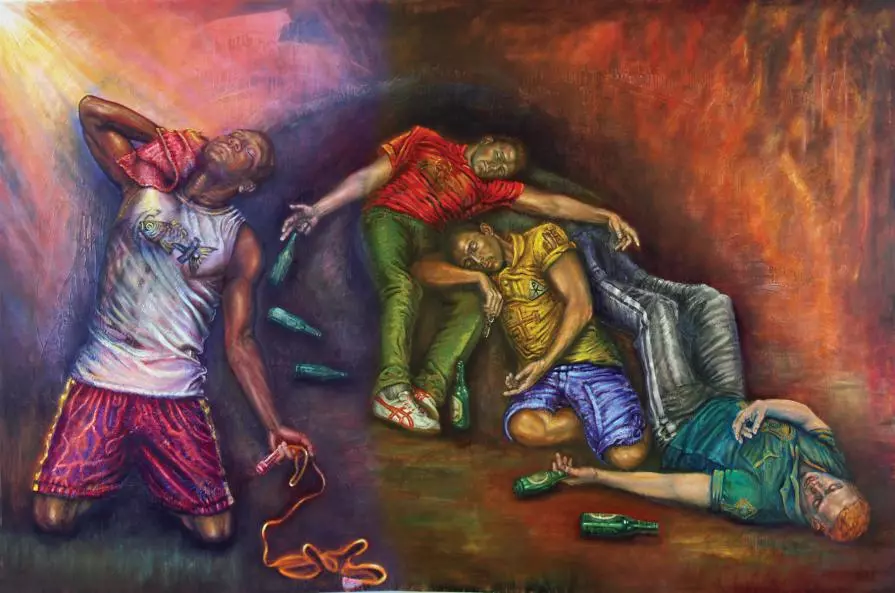Agony in the Garden
The tranquility of their sleep is juxtaposed starkly with the anguish of the boxer, who, grasping his purple towel (a symbol of Christ’s majesty) and skipping rope (a reference to the future lashes of the whip), looks towards heaven, at once vulnerable and pleading, yet eschewing a palpable sense of supernatural strength even on the verge of death, similar to Van Dyck’s desperate Samson, himself a prefigurement of Christ, in Samson Made Prisoner (c.1628-30).
Working behind the unmistakable contrast in action between the boxer and his assistants is a harmony of form and compositional geometry that seeks to bridge the Renaissance devotion to the triangle and the Baroque move towards the more complex ellipse and oval.
At the heart of the canvas, circular motion is created through the sleep-limp arms of the assistants. This homage to the perfect geometrical form is reinforced in the triangular movement as the eye is led by the faces of the sleeping assistants' to rest on the boxer’s left hand - the focal point of the work, from where the viewer’s gaze is invited to behold the figure of the boxer himself. At this point, having contemplated both the sleeping and the awake, the work’s balanced and elliptical whole is revealed.
The painting predicts the approaching posse, intent on Jesus arrest, through the pointing hand of the uppermost assistant, John. Following his gesture reveals a number of highlights arrayed on the right of the canvas, representing the torches of the Roman guards. The boxer’s illumination by a divine ray of light distinguishes him as communing with God both verbally and in spirit.
Agony in the Garden is a modern testament to the order and symmetry discovered and developed throughout four centuries of European art from the Renaissance through the Baroque and the Romantic. Resisting the modern urge towards chaos and discord, the work quotes classical composition, affirming the breath of the divine through the creation of this world and it’s sustenance. It reveals within a harmonious visual order, an agony of complex and exceeding veracity, liberated from the often misguided, modern desire to have a work’s compositional and stylistic function mirror it’s subjective elements.
 Share / Save
Share / Save






Commenti 0
Inserisci commento